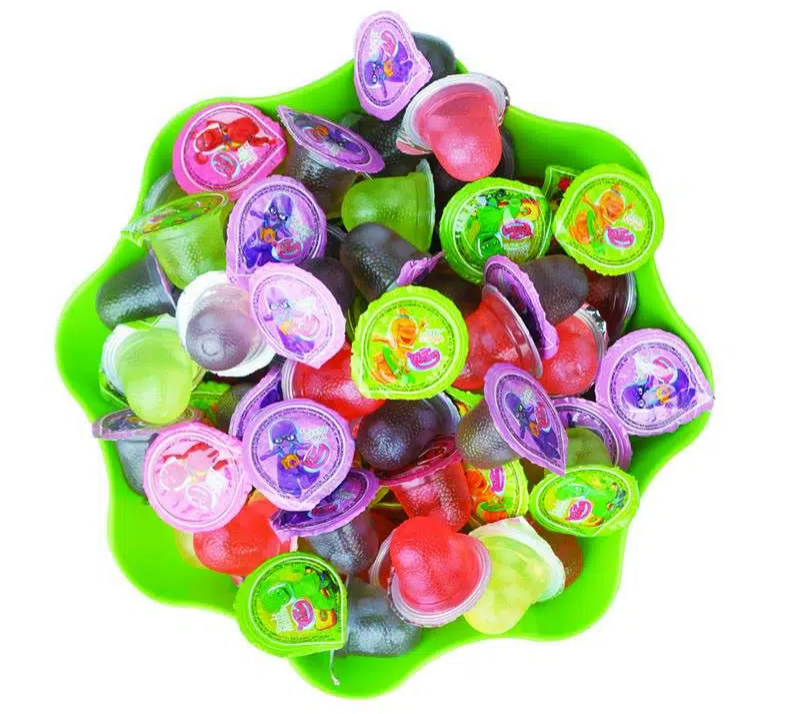Fruit jelly cups and Jello-O are two popular desserts that are enjoyed around the globe. While both may appear similar at first glance, the differences lie in the ingredients, preparation methods, textures used, and final taste. In this blog, we’ll delve into the contrasts and similarities between fruit jelly cups and Jell-O, helping you understand what makes each of these desserts unique.
What is a fruit jelly cup?
Fruit jelly cups are individual servings of gelatin-based desserts with a sweet taste and a gelatinous texture. It is made from fruit juices or extracts that contain pieces of fresh fruit suspended in jelly that go through a special process to make it wobbly. Whether you are eating toast or dessert, jelly adds a fun element with its smooth consistency and vibrant colors. You can also make a Fruit Jelly Drink to beat the summer heat and get a refreshing unique taste.
Fruit jelly cups are famous for their vibrant colors, refreshing taste, and versatility in flavor combinations. What makes a fruit jelly cup stand out is its transparency. Compared to pudding or custard, light passes through jelly. The delicate texture of the fruit jelly cup is what makes it unique and a favorite among both young and adults.
What is Jell-O?
Jell-O (often stylized as JELL-O) is a brand name that offers a convenient and affordable dessert that became popular in North America. It is also known as gelatin and has a smooth and wobbly texture. Jell-O is typically sold as a powdered mix containing flavored gelatin, sweeteners (sugar or artificial ones), and sometimes coloring too. You have to prepare the product by dissolving the powder in hot water and then chilling it until it sets into a jiggly, translucent dessert.
The one thing we need to remember about Jell-O is that it’s more than a product; it’s also a brand-registered trademark owned by Kraft Heinz. Jell-O offers various flavors and types of Jell-O products, such as classic fruit-flavored gelatin desserts or instant pudding mixes.
Ingredients used in fruit jelly cups
- Fruit juice or flavored syrup
- Gelatin powder (flavored or unflavoured)
- Fresh fruits (such as strawberries, kiwi, pineapple, or grapes)
- Sweetener (optional)
Ingredients used in Jell-O:
- Jell-O gelatin dessert mix (flavored)
- Hot water
- Sugar (if using the sugar-free variety)
Preparation Methods:
The preparation methods for fruit jelly cups and Jell-O are also distinct:
Fruit Jelly Cups:
- Gelatin powder in fruit juice or flavored syrup is dissolved to prepare the gelatin mixture.
- The mixture is poured into cups or molds, then fresh fruit pieces are added.
- Further, the cups are chilled until the gelatin sets completely.
Jell-O:
- Jell-O gelatin dessert mix is dissolved in hot water.
- The mixture is then chilled until it sets into a firm consistency.
Texture and Taste:
While both fruit jelly cups and Jell-O are gelatin-based desserts, they differ in terms of texture and taste.
Fruit Jelly Cups
Fruit jelly cups are given a softer, more delicate texture because fresh fruit pieces are added. The taste of fruit jelly cups is influenced by the fruit juice or syrup flavor used in the recipe and the natural sweetness present in the fresh fruits.
Jell-O
Compared to fruit jelly, Jell-O has a firmer, more resilient texture that holds its shape when sliced or molded. Its taste is primarily determined by the flavor of the gelatin dessert mix, which can range from sweet and fruity to tangy and refreshing.
Usage in Recipes
Jelly and Jell-O are used in recipes interchangeably. Both jelly and Jell-O provide a gelatinous texture that is perfect for desserts and salads. Both jelly and Jell-O offer benefits such as thickening sauces, custards, and fillings. Jelly provides an added advantage by giving you fruit flavors by preserving the fruit in it.
Also, jellies can be made at home by following recipes on the internet that talk about mixing fruit juice, sugar, and pectin in the right quantity. In case you do not want to take the hassle of making it at home, jellies are widely available in the market from quality manufacturers, such as JOJOSE FOODS, which manufactures a variety of jellies at an affordable price.
On the other hand, Jell-O comes in a variety of flavors, such as strawberry, lime, or orange, and you have options to choose from; they also come in vibrant colors and flavors. Whichever you pick, it will add excitement to the culinary creations.
Cultural significance of Jellies and Jell-o’s
These delectables you eat daily in your household have a surprising amount of cultural significance. The earliest Fruit Jelly Cup recipes started to appear in the 14th century when cooks boiled meat with spices and let the mixture set. Jell-O’s were invented in the 1840s, and the introduction of Jell-O in 1897 made jellies more accessible to the common masses. During the mid-20th century, after the post-war economic boom, Jell-O gained immense popularity. The vibrant colors, ease of preparation, and Jell-O’s have become an association with family gatherings that have become ingrained in American culture. However, with time, Jell-O has taken on a nostalgic tone. It’s not as ubiquitous as it once was. It remains a crucial part of American culinary history and childhood memories.
Jell-O’s have been featured in countless movies and TV shows and even used for comedic effect due to their jiggly texture and vibrant colors. American visual artist Andy Warhol incorporated Jell-O into his work, commenting on consumerism and pop culture.
The Enduring Appeal of Jellies:
- Versatility: Jellies offer endless possibilities for creativity. They can be enjoyed plain, molded into elaborate shapes, or incorporated into other desserts.
- Nostalgia: For many, jellies evoke happy childhood memories and a sense of comfort.
- Accessibility: Jellies remain an affordable and easy-to-prepare dessert option, making them a popular choice for families and budget-conscious cooks.
JOJOSE FOODS: The Best Fruit Jelly Manufacturer
JOJOSE FOODS is a leading fruit jelly cup manufacturer known for its commitment to quality, innovation, and excellence. We focus on excellence in our production processes and maintain strict quality standards. Jojo Foods ensures that every batch of jelly delivers a satisfying refreshing experience.
Conclusion
In conclusion, while fruit jelly cups and Jell-O share similarities as gelatin-based desserts, their differences in ingredients, preparation methods, textures, and cultural significance make each unique. Whether you prefer the delicate texture of fruit jelly cups or the firmer consistency of Jell-O, both offer a delightful culinary experience.




